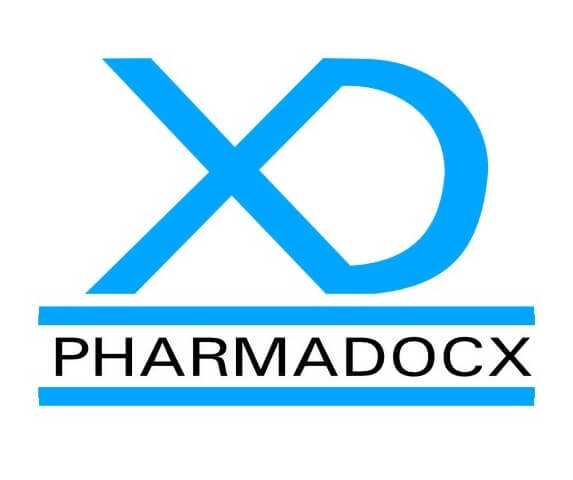Drug quality and efficacy impact the treatment outcome for patients. Hence, it is vital the quality of drugs remains intact till they reach the patients. The packaging of drugs protects them from damage, germs, outer atmosphere, and bacteria, thereby preserving the quality of drugs. Thus, pharmaceutical packaging has a vital role in drug production. The packaging system helps retain the original quality of drugs till they reach the patients. Furthermore, packaging in pharmaceutical industry varies as per the drug type. Additionally, different packaging materials are required for different packaging purposes and levels. There are mainly 3 layers in the pharmaceuticals packaging system, which are primary, secondary, and tertiary.
In this blog, we will be focusing on primary and secondary packaging in pharmaceutical industry. We will discuss the vital functions of both primary and secondary pharmaceutical packaging. Additionally, we will focus on their role in guaranteeing quality and ensuring safety of drugs. Furthermore, we will highlight the regulations for these packaging systems.
Primary and secondary pharmaceutical packaging have distinct yet interconnected functions. Primary packaging is the drug’s immediate cover and container, thereby it is vital for preserving its quality and safety. On the other hand, secondary packaging provides additional protection to the medication and mentions the regulatory information and branding.
What is primary packaging in pharmaceutical industry?
Primary packaging, the most crucial part of packaging in pharmaceutical industry, remains in direct contact with the drug. It is the first and most critical layer of protection in pharmaceutical packaging system. Notably, its major role is to preserve the quality, efficacy, and sterility of drugs. As the primary packaging remains in direct contact with the drug, the material and design have to be selected carefully to avoid any chemical interaction with the medication. Moreover, the packaging design should take into consideration ease of use for patients and convenience for medication administration. Furthermore, primary packaging in pharmaceutical industry has to be comply with stringent regulatory requirements to ensure patient safety.
Materials used for primary pharmaceutical packaging system
Plastic, glass, and metal are commonly used as primary packaging material. Metals, such as steel, aluminium, and tin-plated steel, are usually used for ointments and gels owing to their low reactivity. Plastic bottles and containers are used for their flexibility, lightness, and cost-effectiveness. Additionally, high-quality plastic is used to avoid damage while transporting the drugs from factories to end users. Polyethylene, polyvinyl chloride, polycarbonate, and polyethylene terephthalate are some of the common plastic materials used for packaging tablets and pills. However, glass containers are used for their chemical inertness.
Types of primary packaging in pharmaceutical industry
This packaging material in direct contact with the pharmaceutical serves a critical role in safeguarding the pharmaceutical. It has to be designed to meet specific regulatory pharmaceutical packaging requirements. Additionally, factors, such as protection, dosing, and patient convenience, have to be taken into consideration.
- Liquids: During manufacturing, ampules, vials, bioprocess containers, and bottles are used for liquids. Whereas post-fill/finish processes, vials, syringes, and dropper bottles are used.
- Powders: Sachets are commonly used for powdered medications. These are designed to make it easy for patients to measure and administer the correct medication dosage. Thus, sachets ensure the patients receive the right amount of medication as prescribed. Also, this will ensure patient safety.
- Oral Solid Dose: Blister packs, foil-lid plastic blister packs, and blister packaging are used for oral solid dose. This type of packaging protects tablets and capsules from moisture and light.
Regulations for primary pharmaceutical packaging system
Regulations for primary packaging in pharmaceutical industry have been formulated depending on the type of drug. The regulations require the packaging to be designed for ease of use and as a guarantee of the safety of the product. For instance, blister packaging is suitable for safeguarding tablets and designed with ease of access to tablet in mind. In case of blister packaging, patients can easily obtain the precise medication dose by piercing an individual blister segment. Thus, primary pharmaceutical packaging has to be designed to serve its intended purpose and comply with applicable regulations.
What is secondary packaging in pharmaceutical industry?
Secondary pharmaceutical packaging is the external layer that encases the primary packaging in direct contact with the medication. It is mostly printed material and provides additional protection to the medications. Information, such as active ingredients, type of medicine, manufacturer’s name and address, and precautions, are usually printed on secondary packaging. Secondary packaging protects the drug throughout its lifecycle and provides critical information for patient safety. Moreover, secondary pharmaceutical packaging facilitates easy handling and distribution of medicines packaged in the primary packaging. Furthermore, the secondary packaging layer gives the medication a refined look and is used for branding. Notably, secondary packaging also has a significant role in the pharmaceutical packaging system. It displays essential information, such as usage instructions and expiration dates, which has to be communicated to the patients for their safety.
Materials used for secondary pharmaceutical packaging system
Boxes and cartons are mostly used as secondary packaging material. Although it doesn’t come in direct contact with the pharmaceutical, its design and material should be carefully selected for ensuring product integrity during transportation and storage.
Points to consider while designing the secondary packaging
Secondary packaging in pharmaceutical industry has a vital role in providing extra protection and communicating essential information to the patients. Thus, when choosing its design and material for construction, the following points should be taken into consideration:
- A packaging material with the ability to provide extra protection should be used.
- The secondary packaging material should be durable enough to withstand transportation and storage. The primary packaging and the pharmaceutical should not be compromised by the secondary packaging.
- The secondary packaging should have an indication that it has not beenopened or tampered with.
- The packaging should present essential information, such asdosage instructions, expiration dates, and any necessary warnings. Accurate and clear labelling of pharmaceuticals is mandatory.
- Sustainablepackaging materials should be chosen with environmental impact in mind.
Regulations for secondary pharmaceutical packaging system
Regulations require secondary packaging system to comply with guidelines for medication protection and durability, tamper-evidence, poison prevention, and labelling. Also, there are guidelines for the environmental impact of the packaging. These guidelines have been formulated to ensure the packaging preserves the overall quality and safety of pharmaceutical products. Additionally, the guidelines require the packaging to clearly convey all the necessary information required for patient safety.
Primary and secondary packaging both have vital roles in pharma industry
Both primary and secondary packaging in pharmaceutical industry have vital roles in maintaining drug quality and ensuring patient safety. The packaging should serve their protective function and be visually appealing as well as be easy to open for accessing the medication.
The primary packaging remains in direct contact with the drug so it should be able to preserve the drug quality. Additionally, it should be designed in a manner the drugs can be easily accessed. On the other hand, secondary packaging should be able to effectively communicate all the vital-drug related information to patients. Moreover, it should provide cost-effective logistics and shipping. Along with these, secondary packaging should provide extra protection to the drugs.
Thus, both primary and secondary packaging should be carefully designed and constructed. The packaging is required for protection, branding, and communication.
We at Pharmadocx Consultants provide comprehensive regulatory support to pharma companies planning to enter the Indian market. CDSCO regulations and guidelines have to be followed to market your pharmaceuticals in India. Moreover, packaging in pharmaceutical industry is also heavily regulated to ensure patient safety. Our team of experts will be more than happy to make your regulatory journey hassle-free. Drop an email at [email protected] or call/Whatsapp on 9996859227 and we will provide all the support you need.





